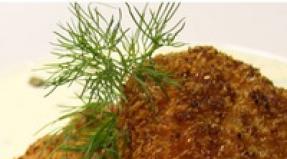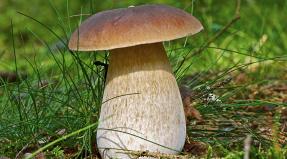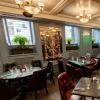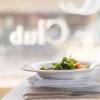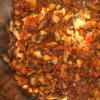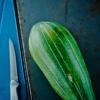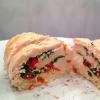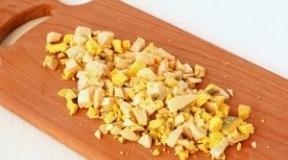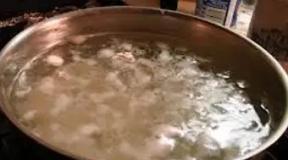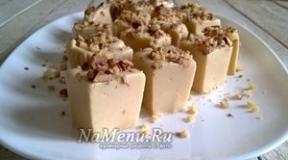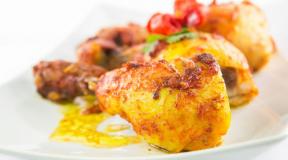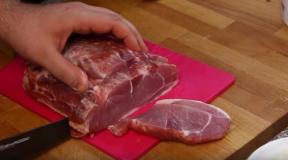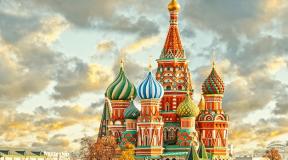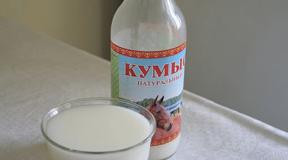History of Champagne. Continuation
Once, three musketeers: Remuage, Degorzhage, Assemblage and Dozazh, who joined them, collided in a Parisian tavern with the guards of the cardinal ... Although no, it’s better to start this story from another.
Winemakers in the Champagne region have been considered lost people from time immemorial. Their job was really thankless. Grapes in the northern (for France, of course) climate grew reluctantly, it was not possible to get a decent harvest every year. But even if the summer was successful, the early cold did not allow the wine to ferment in barrels. This caused all sorts of trouble. The drink became cloudy, acquiring a habit of exploding in cellars, and even in the hands of buyers. But worst of all was the perpetual problem of carbon dioxide bubbles. For hundreds of years, the best minds of Champagne puzzled over how to get rid of them, but to no avail. The ridicule of southern neighbors (especially the eternal competitors of the Burgundians), the suspicions of the guests “what is it hissing in my glass, are you planning to poison?” and the fate of the eternal losers - it seemed that there was nothing left for the champagnes ... 
In 1668, a young monk, Pierre Pérignon, arrived at the Abbey of Hautevillers, on the Marne River. He knew how to count well in his mind and did not know how to lie at all, so the abbot entrusted him to manage the holy of holies of the monastery - a pantry with food supplies. And at the same time instructed to engage in the production of wine. 
Perignon turned out to be an extremely persistent and corrosive person. He spent several years to thoroughly study the local winemaking. And I realized that the problem of Champagne is not in grapes, but in the fact that they did not learn how to work with it correctly. 
Pedantic bosses are never liked, and working under Perignon was a real punishment. With his exactingness, he brought the monk brothers to white heat. But Pierre did not pay attention to this and continued to methodically experiment. And in the end I came to nothing less than the new principles of viticulture. For example, that the vine should be cut and bent to the ground, ensuring that few, but high-quality berries grow on it, collect them carefully and exclusively in the morning, squeeze the juice carefully, preventing the peel from getting into the must. Etc. 
So, step by step, Perignon turned the minuses of Champagne wines into pluses. Does the crop grow every year? It doesn't matter, you can mix cuvee (grape must) of different years in the right proportions to get a blend with the required characteristics. Wine explodes? It is necessary to control the process of secondary fermentation, using bottles made of especially strong thick glass, which are plugged with a massive cork made of oak bark. 
The result of all these tricks was an amazing taste and purity of white wine, the fame of which went far beyond Champagne. The abbey flourished. However, Dom Perignon considered his main task unresolved until the end of his life. Even in his best wine, bubbles still remained, which greatly upset the master. 
But while the experimental monk pored over in his cellars, an amazing thing happened. Somehow imperceptibly it turned out that more and more connoisseurs began to perceive sparkling wine not as defective and low-grade, but, on the contrary, as a new original drink. It all started with the British. The champagne probably reminded them of their favorite foamy beer. And at the beginning of the 18th century, the French royal court was already amused with bubbles in glasses. And the followers of Perignon began to puzzle over how to put more bubbles into the bottle. Wine researcher Abbé Godinot wrote: “France is crazy about sparkling wines, so many winemakers, not knowing the secret of its preparation, use all possible methods, trying to make the wines sparkling. Some of them even add pigeon droppings to their wine.” 
The true secret of making sparkling wine was known, of course, only in Champagne. Here they learned to enhance the natural effect by adding sugar and yeast to the wine. This restarted the fermentation process, as a result, honest vials were delivered to the buyer, without the slightest participation of pigeons or other birds. 
By the middle of the 18th century, champagne had already firmly won the reputation of a prestigious and expensive drink, without which the dessert table looks dull and provincial. But it is unlikely that any of us would have liked the wine of that time - it was extremely sweet, and also cloudy. Sugar winemakers did not spare then. Firstly, the public liked it, and secondly, it perfectly masked any flaws in the wine. 
As for transparency, its secret was lost after the death of Pérignon. It was rediscovered only a hundred years later, in the cellars of the famous widow Clicquot. It was there that the art of remuage was born. By experience, the masters have established that if already ripe champagne is placed in racks at an angle of 45 degrees and every day the bottles are carefully rotated in a special way, then after a while all the sediment will collect at the cork, and the wine will become transparent. 
Then the smallest thing remains - to remove the sediment without pouring out the precious wine. To do this, the necks were first frozen, and then the bottle was opened by turning it down. The sediment with an ice stopper was thrown out by the pressure of carbon dioxide, the bottle was instantly turned over and topped up with expedition liquor (a mixture of original wine and cane sugar). This whole tricky procedure is called disgorging. 
The same widow Clicquot quickly realized that adding liquor (by the way, this part of the technical process is called dosing) can regulate the sweetness of champagne. The fact is that in her time, tastes in European countries had already begun to differ. The sweetest champagne was loved in Russia, and sugar was poured into bottles that went east without measure - up to 300 grams per liter. Half of this amount was enough for the French and Germans, even less for the Americans, and the stiff British drank the driest champagne. As a result, it happened that the Russians, having ordered their favorite Clicquot in London, were so discouraged by its taste that they immediately began to suspect the natives of replacing the noble drink with some outbred sourness. Sometimes, immediately after this, English waiters acquired a new experience for themselves of getting to know their temporal bone with the strongest glass from which champagne bottles were made. 
Nevertheless, despite all the sacrifices, the French continued to experiment, and in the end completely got rid of sugar in wine. Such champagne was initially received with hostility even at home and received the disparaging nickname "brut" - rude. But over time, it has become the most popular. 
Actually, this information is enough to pass for a connoisseur of champagne wines among friends when another cork flies into the ceiling under the chiming clock. It can be even simpler - in the most accessible form, the technical process for the production of champagne is depicted on this sign from the very village of Otvillers, where Dom Pérignon once worked in the sweat of his brow: 
As we can see, nothing complicated: grapes are grown, harvested, the juice is sent first to ferment in barrels, then to mature in bottles. Then they drink champagne, preferably with their legs hanging down from some poetic cliff.
In general, everything. To whom this is enough, they can, with a clear conscience, go to the end of the post to guess the quiz. For curious readers, I invite you to dig a little deeper. Thirty meters. 
And to be more precise, at 33 meters. It is at this depth below the city of Reims that the cellars of the famous Pommery champagne house are located. In 1860, the widow of a wool merchant, Louise Pommery, bought the ancient Roman-era chalk mines to turn them into storage for twenty million bottles of champagne. 
Mmmm, so many delicious things here: 
and well seasoned: 
In one of the most secluded corners of the 18-kilometer catacombs is stored the oldest and priceless bottle of natural brut from grapes of the 1874 vintage. 
A little explanation needs to be made here. Champagne, which indicates the year, is a thing in itself piece. Almost all modern champagne, according to the precepts of grandfather Perignon, is blended, that is, it is made from wine material of different years. The climate in Champagne has not improved much over the past three hundred years, so mixing grapes from several seasons, vineyards and varieties is the only way to achieve a recognizable brand image. Creating the right blends is called the word assemblage and is the pinnacle of the skill of winemakers. But at the same time, blended champagne is valued much lower than vintage champagne. Millesimes or vintages are wines made from the harvest of a particularly successful year. They make up, as a rule, no more than 5% of the production volume. And they have an appropriate price tag. 
Pommery's cellars are some of the deepest and most extensive, but Champagne has even more labyrinths. Under the headquarters of Moet and Chandon (Moët & Chandon) in the city of Epernay, almost thirty kilometers of tunnels, halls and galleries. 

It is better to move around here by some kind of transport. 
And this is one of the rare places where visitors actually read the evacuation map before entering. And some even redraw. There is no other way - you will miss the right turn and your vacation in France may, um, be somewhat delayed. 
Fires have not happened here, but flooding is not uncommon. Water is constantly pumped out of some tunnels, but you still have to squish through puddles 
One of the passages, by the way, leads directly to the local city hall. However, as they assure, the employees of the municipality have long abandoned attempts to get inside. In general, the idea to break through the mine into the cellars from time to time overshadows some bright head. There were even successful digs. However, there is little loss from such thieves. It was much more difficult for winemakers during World War II, when the cellars were used as hospitals and bomb shelters. What happens if a few soldiers are left unattended in a room with bottles, probably, it is not necessary to explain. Although the owners tried to hide the most valuable in secrets, a lot of unique champagne was drunk. 
But another war brought champagne houses solid benefits. During the unique tour to France of the foreign campaign of the Russian army in 1814, the hussars devastated the reserves of Clicquot and Moet. However, for winemakers, this booze was not a ruin, but a brilliant promotion. As a result, within a few years, Russia has become the largest consumer of sparkling wines. 
This barrel, by the way, still remembers those times when the Cossacks roamed the basement and watered their horses with the famous comet wine. But now she, like all her kind, remained in the cellars of Moet only for beauty. Oak continues to be used only by some champagne houses. Replaced it with stainless steel. After gentle pressing, the grape juice enters the vats, where fermentation takes place for several weeks. The result is the so-called “quiet” or base wine, from which the necessary blend is made. Well, or if the chief winemaker decides that the year is interesting enough, then he can take aim at millesime. 
At the next stage, the future wine is bottled, adding the circulation liquor with sugar and yeast, which will turn the must into champagne. Secondary fermentation continues for several weeks. After it, the yeast precipitates and the longest and most important process begins - the maturation of wine. According to the rules, bottles “on the lees” must be aged for at least a year, and for vintage champagne, at least three years. In fact, self-respecting manufacturers significantly increase this period. For example, at Moet, ordinary wine matures for two years, and vintage - at least eight years. Judging by the layer of dust on these racks, vintage is just ripening here. 
By the way, it is this stage in the production cycle that distinguishes champagne from other sparkling wines, in which, to reduce the cost, secondary fermentation is carried out in an accelerated mode in tanks, and the wine is ready to drink in a month. It is not difficult to guess how such a drink is treated in Champagne. And even a little imbued with sympathy for the crusade of local winemakers against all sorts of cunning citizens who call their fizz champagne, even if it is Soviet.
But we digress. After maturation, champagne is waiting for the already mentioned remuage, disgorgement and dose. Then, finally, the bottles are sent to the packing line. 

The metal lids with which the wine is ripe are replaced with the usual corks, the drink is tested for transparency. 
And you can start: 

Let's make a reservation right away that the term "Champagne" can officially only be applied to white sparkling wine from the French province of Champagne, however, this name has long become a household name for all "carbonated wine", especially in the territory of the former USSR, so in this material we will sometimes use the term according to tradition.
Definition
To be called sparkling, wine must contain carbon dioxide, in other words, CO2, ordinary carbon dioxide, which enters the drink in three ways:
- natural bottle fermentation;
- secondary fermentation in tanks (Sharma method);
- artificial saturation with gas (such wines are called "sparkling").
The first method is the most expensive and slowest, the latter is the cheapest and fastest, respectively, the price per bottle depends on the production method.
Origins of sparkling wines
Apparently, the history of Champagne began in antiquity: then no one knew how the wine becomes sparkling, the saturation of the drink with incomprehensible bubbles was attributed to the phases of the moon, and even to the tricks of the gods. However, in the works of professional oenologists of that time, there is no mention of "fizz".
In the Middle Ages, sparkling wines were considered a hopelessly spoiled product, they were even called "devilish". There was something: the nature of the bubbles still remained unclear, but the bottle that burst under the influence of increased internal pressure not only brought loss to the owner, but also gave rise to a chain reaction, as a result of which up to 90% of all cellar stocks could suffer.
 The invention of a durable bottle made champagne a safe drink - the risk of injury from fragments from a bottle explosion was reduced to a minimum
The invention of a durable bottle made champagne a safe drink - the risk of injury from fragments from a bottle explosion was reduced to a minimum Until the invention of the muzzle—a special wire bridle to hold the cork more securely—and strong glass (made in coal-fired ovens rather than wood-burning ones), such accidents were the rule rather than the exception.
In 1662, the Englishman Christopher Merret read a report in which he explained that wine begins to "play" because of sugar, and so the saturation of alcohol with carbon dioxide ceased to be a matter of chance and became a creation of human hands.
History of Champagne
It's hard to believe today, but Champagne wasn't always sparkling: it was originally the name for a sour, rosé wine made from Pinot Noir, made mostly by peasants. The appearance of Champagne is associated with the climatic features of the Champagne region: due to low temperatures in winter, the fermentation of wine was suspended, and in the spring, after warming, it resumed, and secondary fermentation was obtained.
It is documented that already in 1531 there was sparkling wine in France (made by the "rural method" without the addition of sugar), and in the 17th century, the English nobles, who were fed up with luxury, who wanted to distance themselves from the common people as much as possible, began to pay increased attention to the French "pop".
The seventeenth century is associated with the name of the house of Perignon - a monk who allegedly contributed to the development of sparkling wines in general and champagne in particular. In fact, the duties of the venerable Benedictine included just the opposite: he had to fight the devilish bubbles, because of which the monastery suffered losses, and the holy brothers were even forced to wear special iron masks in the wine cellar so as not to suffer from a fragment of a suddenly bursting bottles. However, Pierre Perignon really significantly improved the winemaking of the region, came up with the idea of corking wines with special corks and developed many technologies that are still relevant today.
 Monk Dom Perignon - "father" of champagne
Monk Dom Perignon - "father" of champagne Be that as it may, in the 18th century, the strange, tongue-tingling and dizzying wine ceased to be persona non grata and became fashionable, and in the 1870s winemakers from all over the world came to France to learn champagne. In 1907, the Sharma method was invented, which significantly accelerated and reduced the cost of the natural process of saturation with carbon dioxide. Today, sparkling wines are considered a sign of luxury, wealth, an indispensable attribute of a holiday and any celebration.
History of sparkling wines in Russia
Russian winemakers did not lag behind European ones and willingly learned champagne from the French, so that already in 1799 the first official batch of domestic sparkling wines was released in Crimea, although, judging by the records of contemporaries, “effervescent wines” in that region were known as early as 1711 . The history of Russian "champagne" is also associated with the name of Prince Golitsyn, who made a significant contribution to the development of this area of production.
However, the brand "Soviet Champagne" itself appeared in 1936, when the post-revolutionary passions more or less subsided and prohibition was abolished. With all the relevance, the question arose: what should a simple proletarian drink at the end of the working day, if he wants to have a cultural rest, and why are Soviet workers worse than their Western "colleagues"?

 Soviet champagne cannot be exported
Soviet champagne cannot be exported So in the USSR, the advanced Sharma method appeared according to the Frolov-Bagreev system (then improved to the “continuous flow” method), which allows you to crank out the entire champagne process in 3 weeks, and with it - affordable (albeit not very refined) sparkling wine for workers. The history of "Soviet Champagne" would be incomplete without talking about its name.
This trademark was not assigned to one plant and applied to all sparkling wines of the Union: in fact, from any grape variety and made by any method.
In 1997, the legitimacy of the name was rightly challenged by French winemakers, so now the term "Soviet champagne" can only be found in Russian writing on wines for domestic use. For the international market, the brand "TM Soviet Sparkling" is registered, in literal translation - the Soviet "sparkling" or "sparkling".
France
In addition to the famous Champagne, the country has given the world other sparkling wines.
- Cremant - wine from regions outside of Champagne, has a light "creamy" taste (hence the name), is made using the champagne method.
- Limu is a sparkling wine from Languedoc.

 Not only champagne
Not only champagne Italy
An amusing historical curiosity is connected with Italian sparkling wines: in 1570, a doctor from Brescia named Girolamo Conforti wrote a treatise in Latin on the phenomenon and properties of sparkling wines. The very same alcohol "with bubbles" in Rome and neighboring regions appeared much later - after the development of French technology. So far, no one has given a clear explanation for this inconsistency.
Please note that "Spumante" and "Frisante" are not brand names, but the degree of "sparkling" (strong and weak, respectively).
- Asti is, in fact, the Italian analogue of French Champagne, in the sense that this wine is the calling card of national “pops”. Name controlled by origin.
- Prosecco is a light and inexpensive sparkling wine.
- Lambrusco is a red "Italian champagne" with a rich bouquet.
- Franciacorta - the wine of the "major league", more expensive than Asti. Name controlled by origin.
- Oltrepo Pavese is an elite wine with the DOCG category. Rarely exported.
- Fragolino - the famous "strawberry compote" is not of the highest quality.

 Asti is the Italian answer to champagne
Asti is the Italian answer to champagne Spain
Spanish winemakers, like many others, were also inspired by the experience of the French, and the first sparkling wine that appeared in 1872, as one would expect, was called "champagne".
In the 1883s, the name had to be abandoned, so Espumoso appeared, which later became the famous Cava (Cava).

 Cava - Spanish representative
Cava - Spanish representative Sparkling wine, light and intoxicating, has served as an invariable decoration of the festive table for many years, pleases with the harmony of color and the bewitching play of bubbles. This elegant drink gives pleasure and joy, winning many fans with a unique grape-fruity aroma.
Sparkling wine is sparkling wine that contains carbon dioxide, which enters the drink in three ways:
- natural fermentation in the bottle;
- secondary fermentation in a sealed tank;
- by artificial saturation with carbon dioxide (in the process, “sparkling wine” is obtained).
Excess carbon dioxide is released when uncorking the bottle, which is confirmed by a loud pop and a beautiful flicker of bubbles on the walls of the glass.
For making sparkling wine It is allowed to use seven grape varieties, the names of which are clearly spelled out in the rules of appellations, developed in 2010, and list:
- Pinot Noir;
- Pinot Meunier;
- Chardonnay.
Others - Arban, Pinot Blanc, Petit Mellier and Pinot Gris are extremely rarely grown and have been listed in the rules for historical data. Each variety complements the drink with its own unique characteristics. Reds - create the structure of sparkling wine, white varieties bring acidity and a pleasant aftertaste.
The grape harvest is done by hand yu and earlier than the period of its ripening, since at this stage it has high acidity, and little sugar. Spoiled berries are not added to production. The process of squeezing the juice takes place very quickly so that the wine remains white and does not stain from the skin of red varieties.
By grape variety, wines are:
- varietal (made from one variety);
- sepazhnye (produced by mixing different varieties during processing);
- blended (prepared from two or more batches of wine).
Sparkling wine is divided by quality and aging time:

Different changes in weather conditions lead to different yield characteristics, even within the same variety. For example, the Pinot Noir vine thrives, acquiring a sweet and full flavor, in cool climates but does not like heat. In order to maintain the corporate style of manufacturing, a blend is used.
When blending (mixing) wines from different years, the main volume should be the wine of the current year's harvest. This combination will help balance fluctuations in tastes, improve quality and ensure the release of homogeneous batches of wine in terms of organoleptic characteristics.
Champagne or sparkling wine
 The classic example of sparkling wine is champagne, but not every wine can be called champagne. This right belongs only to wines produced in the north-east of France in a province with a rich history and traditions in winemaking - Champagne.
The classic example of sparkling wine is champagne, but not every wine can be called champagne. This right belongs only to wines produced in the north-east of France in a province with a rich history and traditions in winemaking - Champagne.
The name "champagne" has been protected by law since 1891 in accordance with the Madrid Treaty on the International Registration of Marks, attested by the Treaty of Versailles in 1919, and can be applied to sparkling wines produced in accordance with established standards and in the region of the same name in France.
Wine is made using the champagne method or otherwise, "champenoise". The essence of the method is that already in a closed bottle, secondary fermentation begins, which lasts for eighteen months. This method is used all over the world, but the wine produced cannot be called champagne.
Under the leadership of the "Interprofessional Committee of Champagne Wines", a collection of rules and regulations has been prepared, the implementation of which will allow the production of high quality products. The list of rules names the best varieties for further processing, determines the most suitable area for growing grapes, and clearly defines the aging time, the degree of pressing and the organoleptic characteristics of the berries (taste and smell). However, a wine made to the specified standards and meeting all requirements, but outside the province of Champagne, may be called "wine produced according to the champagne method."
History of Champagne
The history of the development and improvement of this amazing drink is quite extensive, and the very origin of champagne is described in some sources as an accidental phenomenon. Grapes in the French province Champagne has been cultivated since the third century, but wine began to be made after a thousand years. At the beginning of production, only red wines were made, which turned out to be tasty, but slightly carbonated.
An unpleasant moment during the storage of a fruit drink was secondary fermentation, as a result of which the barrels burst. Even after the spill, the processes were repeated, and this led to large losses of wine. The main reason for the re-fermentation was the unstable climatic conditions in Champagne. In autumn, a sharp cold snap stopped fermentation, and with the onset of heat, unfermented sugar started this process again.
 According to history, a monk from the Abbey of Otvillers, winemaker Dom Perignon knew about the existence of effervescent wines from a young age. The brothers from the Catholic monastery of Saint-Hilaire were engaged in the winemaking craft and did not hide the method of preparing this drink. According to their recipe, young white wine was mixed with sugar and bottled for further fermentation.
According to history, a monk from the Abbey of Otvillers, winemaker Dom Perignon knew about the existence of effervescent wines from a young age. The brothers from the Catholic monastery of Saint-Hilaire were engaged in the winemaking craft and did not hide the method of preparing this drink. According to their recipe, young white wine was mixed with sugar and bottled for further fermentation.
But this process could not be controlled and many bottles simply exploded. The losses from the battle sometimes amounted to almost 40%, and in general - the drink became sour with a pronounced taste of yeast. As a result, there were only a few copies with a truly divine wine, where the fermentation process went well. The St. Hilaire brothers gave up trying to pursue such an unreliable trade, stopping production.
But the noble and unusual taste of wine conquered Dom Perignon and he decided to bring the recipe to perfection. The winemaker conducted experiments with varieties and tastes of wines, studied the fermentation process, observed the stages of production, and almost half a century later shared one of his results with the abbot of the monastery. His creation was a wine made from white grapes with a delicate aroma and tiny gas bubbles.
 So, at the end of the 17th century, real champagne was invented in the province of Champagne, which became the main attraction of the region and became famous throughout the world for its elegant and pleasant aftertaste.
So, at the end of the 17th century, real champagne was invented in the province of Champagne, which became the main attraction of the region and became famous throughout the world for its elegant and pleasant aftertaste.
Dom Perignon is not the creator of champagne, but he played an important role in the history of the drink. The work of the winemaker helped to improve the process, creating the perfect balance between taste and aroma. Since then, wine from the belly rykami began to be called champagne.
The monk did not disclose the secrets of success, and many important moments of production remained unknown. The skill of the winemaker was in the correct mixing of different batches of wine materials taken from several plantations. A valuable invention of Dom Perignon was cork, made from cork oak bark. She was the best at corking glass bottles and did not release air.
But in history there is another version about who invented champagne. According to the documents of the Royal Society of London in 1662, the Champagne method was described in detail by the British. They tried sparkling wine back in the 16th century, which was supplied to them from the Champagne province. At that time, it was a green drink with added sugar and molasses to start the fermentation in the bottle. To slow down this process, the British invented reliable glass containers and stoppers. Due to additional firing in a coal furnace, the glass became strong. The French also did not give up trying to give the airy drink the perfect taste. And only in 1876 modern dry technique (brut) was brought to perfection.
After the method of making champagne became known, France launched its mass production. To preserve the quality of wines special decrees were adopted that described in detail the "state standard" for the production of the drink. The control of its implementation was carried out by the royal inspectors.
Bubbles in champagne
 In the early days of fine wine production, there were many opinions about the appearance of bubbles in the bottle. Some winemakers associated this process using immature raw materials, others believed that this was the result of poor workmanship. However, no one could cope with the uncontrolled loss of flavored drink during bottle explosions.
In the early days of fine wine production, there were many opinions about the appearance of bubbles in the bottle. Some winemakers associated this process using immature raw materials, others believed that this was the result of poor workmanship. However, no one could cope with the uncontrolled loss of flavored drink during bottle explosions.
The taster Dom Pérignon devoted a lot of time to studying the process of bubble formation, trying to prevent it. Subsequently, the winemaker became the first who was able to "tame" naughty wine. He came up with the idea of pouring champagne into containers made of durable glass and tying corks with a rope soaked in oil.
Where do bubbles come from
After yeast and sugar are poured into the drink, bubbles form: the yeast, absorbing sugar, releases carbon dioxide, which will slowly accumulate in a corked bottle, after which pressure is formed and the wine is champagne. It is impossible to observe the bubbles in the bottle, but as soon as the cork is removed, the pressure drops sharply and hiss appears.
In the production of sparkling wine, bubbles considered a side effect. However, they play an important role in confirming the quality of the drink: the longer the movement of bubbles in the glass continues, the better the wine. Also bursting bubbles create the flavor of the drink and spread it faster.
The development of champagne production in the XIX century
 It is during this period that the improvement of methods for the production of sparkling wine falls. The masters of the wine business have more experience in making the drink. They began to understand the varieties and select special high-grade raw materials. Deep cellars were built to store products where the same temperature is maintained throughout the year.
It is during this period that the improvement of methods for the production of sparkling wine falls. The masters of the wine business have more experience in making the drink. They began to understand the varieties and select special high-grade raw materials. Deep cellars were built to store products where the same temperature is maintained throughout the year.
In 1825, a pouring machine was put into production. Two years later, the winemaking business was replenished with the first cork machine, and in 1846 - a machine that fixed corks with string. An important introduction to production was a machine for cleaning bottles and for dosing expedition liquors.
There was a disgorgement operation, which is used in bottled champagne. Disgorging is necessary to extract the yeast sediment from the bottle after the remuage. From the master degorger required great experience and accuracy in the process. He had to pay attention to all the smallest leftovers, determine the quality of the wine by the taste and smell of the foam, and also reject bottles with spoiled products.
The disgorgement operation was carried out very quickly: the master uncorked the bottle turned upside down, and under the pressure of carbon dioxide, the sediment, together with the cork, was thrown out of the container. In the process of sediment ejection, there was a loss of champagne wine and carbon dioxide pressure, so ice began to be used during disgorgement. Henry Abele was the first to do this in 1844.
A huge success in the production of sparkling wines was the method of determining the amount of sugar in circulation. This method was developed by François, which made it possible to ensure the necessary pressure in the bottle and eliminate the fight.
Since 1850, scientists have become interested in methods for making champagne wines. Professor of Chemistry Monmenet issued theoretical and practical recommendations for the manufacture of products, and also proposed changing the solubility of CO2 in wines. He owns the development of the afrometer, with which the pressure in the bottle was measured and an afrophore - a cylinder silvered from the inside for champagne.
Winemaker Victor Lambert worked on fermentation technology, as a result of which he managed to achieve the conversion of malic acid into lactic acid. This is how brut was born - the most popular variety in the world - a very dry champagne.
When France fully recovered from revolutions and wars, champagne again gained popularity in its homeland. For the people, an era of beautiful social life began, accompanied by the clink of glasses and splashes of champagne.
 The fame of wine with bubbles spread rapidly throughout Europe. For the first time in Russia, it appeared in 1780 thanks to the winemaker Monsieur Philippe Clicquot. He sent a trial batch of wine to Moscow. After that, revolutionary unrest began in France, followed by the long Napoleonic Wars, so negotiations on permanent supplies were postponed. Trade relations with Russia were resumed only by 1814.
The fame of wine with bubbles spread rapidly throughout Europe. For the first time in Russia, it appeared in 1780 thanks to the winemaker Monsieur Philippe Clicquot. He sent a trial batch of wine to Moscow. After that, revolutionary unrest began in France, followed by the long Napoleonic Wars, so negotiations on permanent supplies were postponed. Trade relations with Russia were resumed only by 1814.
The well-known wine house "Clicquot", which was then already called "Widow Utiko", was engaged in deliveries. The leadership of the Clicquot house was taken over by the young widow Nicole Clicquot, and production immediately began to prophesy an imminent collapse. But the lady was smart and enterprising, well versed in the intricacies of winemaking, able to solve any business issues.
A fortunate turn in Madame Clicquot's career became a trade agreement with Russia. France was devastated by wars, and champagne was hardly sold there, but in rich Russia this drink was taken with delight, instantly conquering the people with unusual flavor notes. Champagne quickly conquered the Russian market, becoming the national drink. Hussars drank it in dozens at lavish parties, merchants celebrated profitable trade deals with them, and Russian poets devoted hundreds of laudatory lines to sparkling wine. The volume of sales was huge - almost 90% of the total production of the House "Veuve Clicquot".
In 1814, the Clicquot house sends a batch of champagne to Russia. Sparkling wines were collected from surviving and not plundered cellars (20 thousand bottles). The goods are idle for a long time in Koenigsberg and reach the borders of Russia with long delays. After the opening of the entrance, Madame Clicquot ships the next batch of champagne, which enriched her production by 73,000 rubles. This huge sum for those times was able to restore stability, recoup all costs and create a solid foundation for the further development of the company.
In Russia, the cost of Veuve Clicquot champagne was high - 12 rubles per bottle, but true connoisseurs of noble taste paid any money just to enjoy the finest wine in the world.
 Interest in the excellent taste of sparkling wine did not subside, and by the end of the 19th century, production was launched in many cities of Russia. One of the famous wine estates of that time belonged to Lev Golitsyn. The plantations were located in the Crimea and were called "New World". French winemakers were invited to the prince's factory, who created original recipes from different varieties of grapes grown in the Crimean lands.
Interest in the excellent taste of sparkling wine did not subside, and by the end of the 19th century, production was launched in many cities of Russia. One of the famous wine estates of that time belonged to Lev Golitsyn. The plantations were located in the Crimea and were called "New World". French winemakers were invited to the prince's factory, who created original recipes from different varieties of grapes grown in the Crimean lands.
The sparkling drink was produced according to the classical technology developed by Pierre Pérignon. The products of Prince Golitsyn were sent abroad and throughout the Russian Empire. The excellent quality of champagne was appreciated at the Moscow and Paris exhibitions, where he was awarded gold medals. When revolutions began in France, the masters hastily left Russia, and took the recipe for the drink with them. In the same period, the factory of Prince Golitsyn was plundered.
Restored the production of champagne Anton Frolov-Bagreev. Also during this period, mass production was launched on the orders of the Soviet authorities. The production time for the drink was 26 calendar days. Products were produced under the name "Soviet champagne".
The Marquise de Pompadour claimed that “champagne is the only wine that leaves a woman beautiful,” and this is true. This sparkling, playful, quickly intoxicating light sparkling wine, without which the New Year is unthinkable, has been one of the ladies' favorite holiday drinks for several centuries.
The history of champagne goes back 350 years. As the name suggests, the wine originated in France, and Champagne became the main region for the production of sparkling wine. Once the territory of the present Champagne was the seabed. The sea receded 70 million years ago. Due to the earthquakes of the Tertiary period, Cretaceous deposits were formed, which provide good drainage. In addition, limestone and chalk soil perfectly retains solar heat, provides relative temperature stability, and its saturation with minerals, in particular silica, gives Champagne wines a special aroma and sophistication.
The exact date of appearance of the miraculous wine with bubbles of gas can be considered 1668, when Abbot Godinot, canon of Reims Cathedral, described in his church book "a wine with a light color, almost white, saturated with gas." A few decades later, France experienced a boom in sparkling wines. Champagne came into vogue, which boosted production and improved technology.
In the era of the appearance of the drink, there were many opinions about where the bubbles in the bottle come from. Some attributed this to the lunar cycle, others to unripe grapes, others believed that something was added to the wine. It is possible that sparkling wine appeared by chance. Since ancient times, winemakers have been aware of the peculiarities of some wines, which, after fermentation, begin re-fermentation in the spring, and gas is formed in the bottles. These properties have always been considered a side effect of winemaking, and they were not given importance. On the contrary, they considered it a consequence of poor-quality work of winemakers.
But in the second half of the 17th century everything changed. Wine produced in the abbeys of France became popular. But for a long time, wine production was artisanal, there was no fixed technology and accurate knowledge about its fermentation, practical knowledge was not recorded, and records began to be kept much later. The champagne process was often uncontrollable, and up to 30-40% of the bottles burst from excessive pressure. Until 1750, Champagne wine was shipped in barrels with instructions on how to make bottle runs. For a long time, winemakers couldn't beat haze and sediment in bottles. A kind of revolution in technology was made by Chantal's book "Traite de 1'art de faire le vin", which explained the significance of sugar in fermentation. With the advent of the book, sugar liquor (a solution of wine sucrose) began to be added to champagne.
Starting from the 19th century, special materials, special sugar liqueurs, different varieties of musts were used in the production of sparkling wines: cuvée, 1-2-3 tai, rebege. For the maturation of wine were made deep cellars with constant temperature and humidity. In 1825, the first filling machine appeared, and in 1827, the first capping machine. In 1844, a machine for cleaning empty bottles and dosing liquor appeared, and in 1846 a machine for fixing corks with twine. Since 1850, the production of champagne has been on an industrial scale, technologies have been continuously improved. Special bottles were created that can withstand pressure up to 30 atmospheres. The law of 1927 defined the zone of the region growing grapes for the production of sparkling wines in 36,450 hectares between Reims in the north and the Seine in the south. Only those wines that were made in this region from grapes grown in this particular area could since then be called champagne.
History in faces
Dom Pérignon is considered the "father" of champagne. The Benedictine monk, who received an excellent training and was famous for his brilliant abilities as a winemaker, from 1670 began to manage the wine cellars of Otvillers Abbey. He did not invent champagne as such, but he managed to improve his recipe to the taste we know today. And yet - it was Dom Perignon who invented the method of obtaining white sparkling wine from red grapes and developed ways to care for them. The famous monk was also an excellent taster, judging the quality of wines by taste and smell. Possessing a phenomenal memory, he made excellent blends of wines grown in different regions to create one "signature" taste. This practice was continued by subsequent generations of winemakers. One of Dom Perignon's most important inventions was the cork cork, which sealed the bottle in the best possible way, swelling with wine and not letting air out of the bottle. In addition, a hard-working monk found a means of clarifying wine without pouring it into another bottle. Unfortunately, this secret, like many others, was lost. In those days, the monks-winemakers did not leave records and all the secrets of craftsmanship were indulged orally. Another equally famous winemaker and also a Benedictine monk named Udar made wine in the abbey of St. Pierre. The wine of this abbey was valued much more than the wines of Champagne, but their production was small in volume and the name of all sparkling wines was given to the area of their main production, that is, "champagne" wines.
Another well-known name in winemaking and champagne production is Clicquot. In 1772, Philippe Clicquot founded his own company for the production and sale of wine. After a while, he focused his efforts on Champagne sparkling wines. After Philippe's death, his son François took over the company and greatly strengthened the firm's reputation with the help of friends and like-minded people. However, in 1805, Francois died, leaving all affairs to his wife Clementine. The widow Clicquot, a woman of 28 years of age, with ebullient energy, continued the work of her husband, and soon the name Clicquot was known not only throughout France, but also beyond its borders - in England and the rest of Europe. In 1812, the company's business was shaken sharply due to the war between France and Russia. Chaos reigned in the country, and Madame Clicquot decides to save at least part of her stocks of wine by sending 20,000 bottles of champagne to Russia in 1814. With great difficulty and losses, the consignment of wine reached the Russian border and brought Madame Clicquot 73,000 Russian rubles, which at that time was a fortune! The company was saved from ruin and got the opportunity to develop.
In 1831, the company was managed by a young winemaker, Edouard Berne, who further strengthened the fame of the Clicquot name, and since 1866, he himself became the owner of the brand at the age of 88.
Letter of the law
Although the term "champagne" is often used by sparkling wine producers in many countries and localities (for example, in California, Canada and Russia), it is correct to use it only in relation to wine produced in the Champagne region. Under the auspices of the "Interprofessional Committee of Champagne Wines", a comprehensive set of rules and regulations has been developed for all wines from this region. These rules are designed to ensure the production of a high quality product. The rules indicate the most suitable places for growing grapes, the most suitable grape varieties - champagne is made from a single variety or a mixture of no more than three grape varieties: Chardonnay, Pinot Noir and Pinot Meunier. It also defines a fairly long list of requirements that determine the main aspects of growing grapes. Among these rules: pruning of the vine, the harvest of the vineyard, the degree of pressing of the grapes. Only if the wine meets all these requirements, the name "Champagne" can be affixed to the bottle.
In accordance with the Treaty of Madrid (1891), in Europe and most other countries, the name "champagne" is protected by law as the name of a sparkling wine produced in the region of the same name in France and meeting the standards established for such a wine. This exclusive right to the name was confirmed by the Treaty of Versailles at the end of the First World War. Sparkling wines are made all over the world, and many places use their own terms to define their own sparkling wine: in Spain it is Cava, in Italy it is Spumante, in South Africa it is Cap Classique. Italian sparkling wine made from Muscat grapes is called "Asti". In Germany, the most common sparkling wine is Sekt. Even other regions of France are prohibited from using the name "champagne". For example, winemakers in Bordeaux, Burgundy and Alsace make wine called Cremant.
Unique recipe
The grapes used in the manufacture of champagne are usually harvested ahead of time - when the sugar level in it is lower and the acidity level is higher. The juice from the harvested grapes is squeezed out quickly enough to keep the wine white.
The initial fermentation begins in the same way as for any other wine - in barrels or stainless steel tanks, where the natural sugar in the grapes is converted into alcohol, while the by-product carbon dioxide escapes. In this way a "base wine" is obtained. This wine is too sour and not very pleasant on its own. At this stage, blending is carried out using wines from different vineyards and different years.
Mixed wine is bottled, a mixture of the same blend with yeast and a small amount of sugar is added there. Bottles in a horizontal position are placed in the wine cellar for secondary fermentation. During secondary fermentation, carbon dioxide remains in the bottle, dissolving into the wine. The amount of added sugar affects the pressure in the bottle. To reach the standard level of 6 bar, the bottle must contain 18 grams of sugar and yeast in the amount established by the European Commission: 0.3 grams per bottle. Such a mixture of sugar, yeast and still champagne is called "circulation liqueur".
After aging (minimum one and a half years), bottles of wine are subjected to a “remuage” process, during which they are rotated daily at a small angle and gradually transferred to the “neck down” position so that the sediment collects at the neck and can be removed. The process of removing the sediment is called "disgorgement", and in the recent past it was a highly skilled manual operation to remove the cork and remove the sediment without losing a significant amount of wine. At the same time, “dosing” is carried out (a certain amount of a solution of sugar in wine, called “expedition liquor”, is added). Then the bottle is corked again and aged for a short time, about 2 weeks. Prior to the invention of this process (reputedly pioneered by Madame Clicquot in 1800), champagne was cloudy. Currently, most manufacturers perform disgorgement using automatic machines: a small amount of liquid at the neck of the bottle is frozen, and a piece of ice, along with the sediment frozen into it, is removed.
Champagne wines cannot legally be sold unless they have been aged in the bottle for at least 18 months. Approved champagne-making regulations require vintage champagnes to age in the cellar for three or more years before disgorging, but many well-known producers significantly exceed this minimum requirement by leaving bottles in the cellar for 6 to 8 years before disgorging.
Even among experts, there is no unequivocal opinion on the effect of aging champagne after disgorgement. Some like the freshness and energy of a young, barely disgorged champagne, while others prefer the baked apple and caramel flavors that come with a year or more of disgorged champagne.
Most champagne is generic, made from a mixture of grapes from different years (the exact composition of the mixture is indicated on the label by only a few manufacturers), while for vintage champagne made from grapes of the same year, the vintage year and the word "vintage" (fr. - Millesime).
Finally, 2 more interesting facts:
It is believed that in a glass of good champagne, bubbles form within 10-20 hours after the bottle is uncorked!
And the average bottle of champagne "contains" about 250 million bubbles!
The drink of kings. History of Champagne
Champagne differs from other sparkling wines in that it can only come from the Champagne region of France, but the method of secondary fermentation of the drink inside the bottle, during which magic bubbles are formed, is practiced not only there.
For example, in Italy, Franciacorta and Trento Doc wines are made in the same way, but not prosecco at all - it is fermented in vats. In England, according to the method that winemakers call "French", sparkling wine Chapel Down is produced. But who first thought of fermenting wine in bottles?
Most French people are sure: of course they are. What are the options here? In Champagne, everyone to this day believes in the legend according to which an amazing discovery, as expected, was made absolutely by accident by the well-known monk Dom Pérignon. Allegedly in 1821, a certain Benedictine brother Dom Groussard discovered ancient documents in the abbey of Oville. They mentioned the monk Pierre Pérignon. He was born in 1638, at the age of 19 he entered the Benedictine order, and spent most of his life in the abbey of Oville, which owned vast vineyards.

According to legend, once a monk noticed that one of the wines fermented right in the bottle, and the inquisitive om Perignon decided to immediately open it. The cork flew out with a pop, the monk poured himself a glass of wine and was so amazed by its taste, as well as the presence of bubbles in the drink, that he immediately alarmed the entire monastery. He ran around the cells, shouting out a phrase that later became winged: “Brothers! Go quickly! I drink stars! Hearing him, all the monks immediately went as one for a spontaneous tasting of the magic bubbles. The curtain. Applause.

The story is definitely beautiful. Only in it there is almost no word of truth. The monk Pierre Pérignon actually existed. And, yes, at Oville Abbey, he was responsible for the production of wine. But not sparkling. Moreover, the French knew well before the birth of Dom Perignon that if they bottled wine before the fermentation process was complete, this would lead to the formation of bubbles. And, you know, this fact did not please anyone. At that time, French glass was not very durable, and therefore bottles in which bubbles formed under pressure simply exploded - just like cucumbers or tomatoes rolled incorrectly into jars.

All efforts went down the drain, so it is not surprising that in those days the French called their ancestor champagne “devil's wine”: who else, except Lucifer, could do such a bad thing with honest winery workers? Working in the abbey of Oville, Dom Perignon not only never tried to experiment with the production of sparkling wine, on the contrary, he tried in every possible way to avoid even the possibility of fermentation of the drink inside the bottle. The legend of the monk-inventor became popular after Moët & Chandon released the first batch of champagne under the well-known Dom Pérignon brand in 1921. Here, as they say, only marketing - nothing personal.

“If not Dom Perignon, then who?” - you ask. I'm afraid the answer may shock you. The first sparkling wine, obtained as a result of secondary fermentation inside the bottles, began to be made .... the English. However, they did not do without the French at all. In the 17th century, Britain actively bought wine from Champagne. It was transported, of course, in barrels, and already bottled on the spot. English glass turned out to be stronger than French glass, so the bottles did not explode, but the British really liked the drink with bubbles. They finalized the technology and put the production of champagne on stream.

Read also...
- Thai meat with vegetables - a classic recipe with step by step photos of how to cook beef with bell pepper and soy sauce at home
- Soft brushwood with cottage cheese: recipe with photo step by step
- Soft brushwood with cottage cheese: recipe with photo step by step
- Marinade for chicken How to marinate chicken meat for frying
